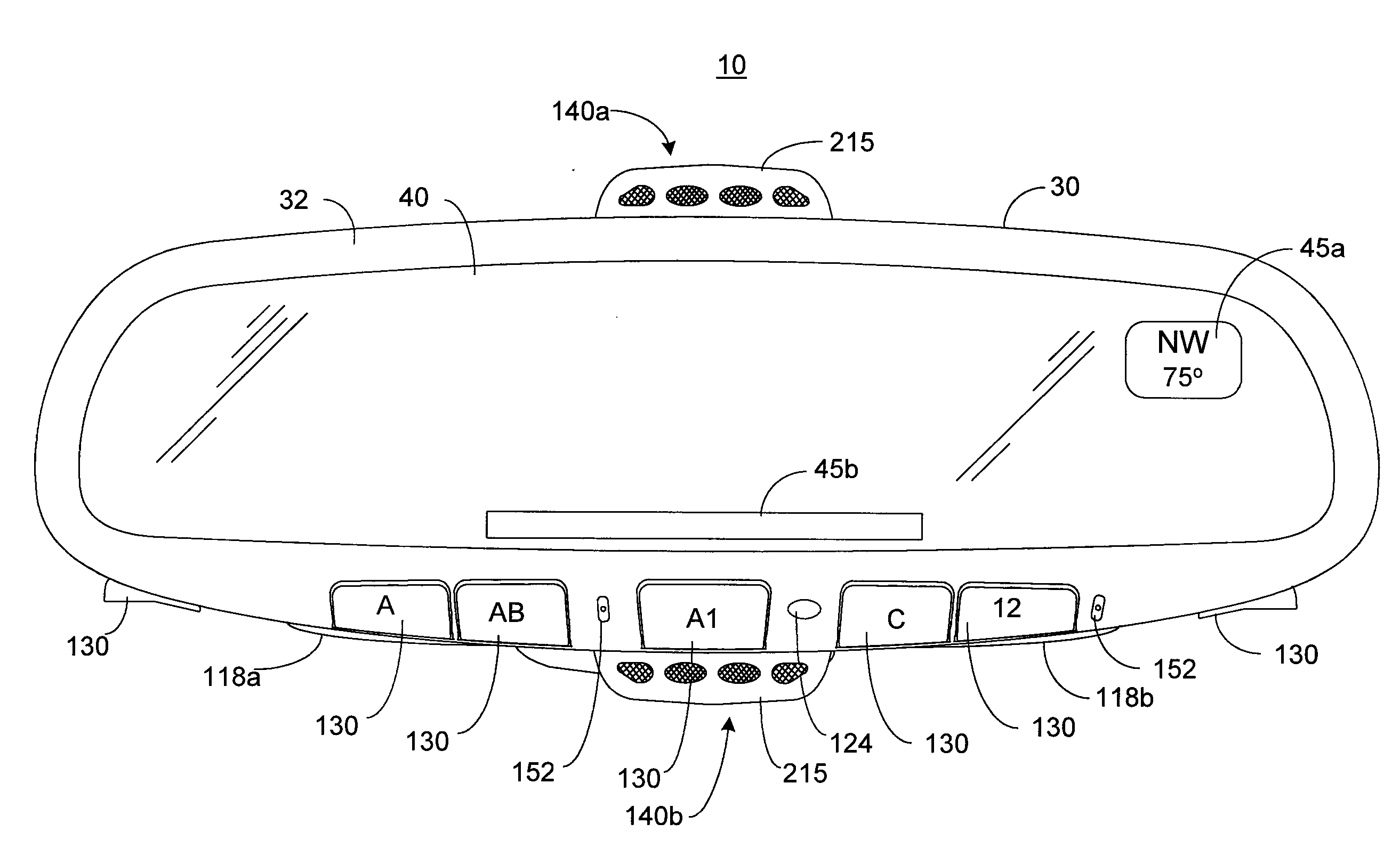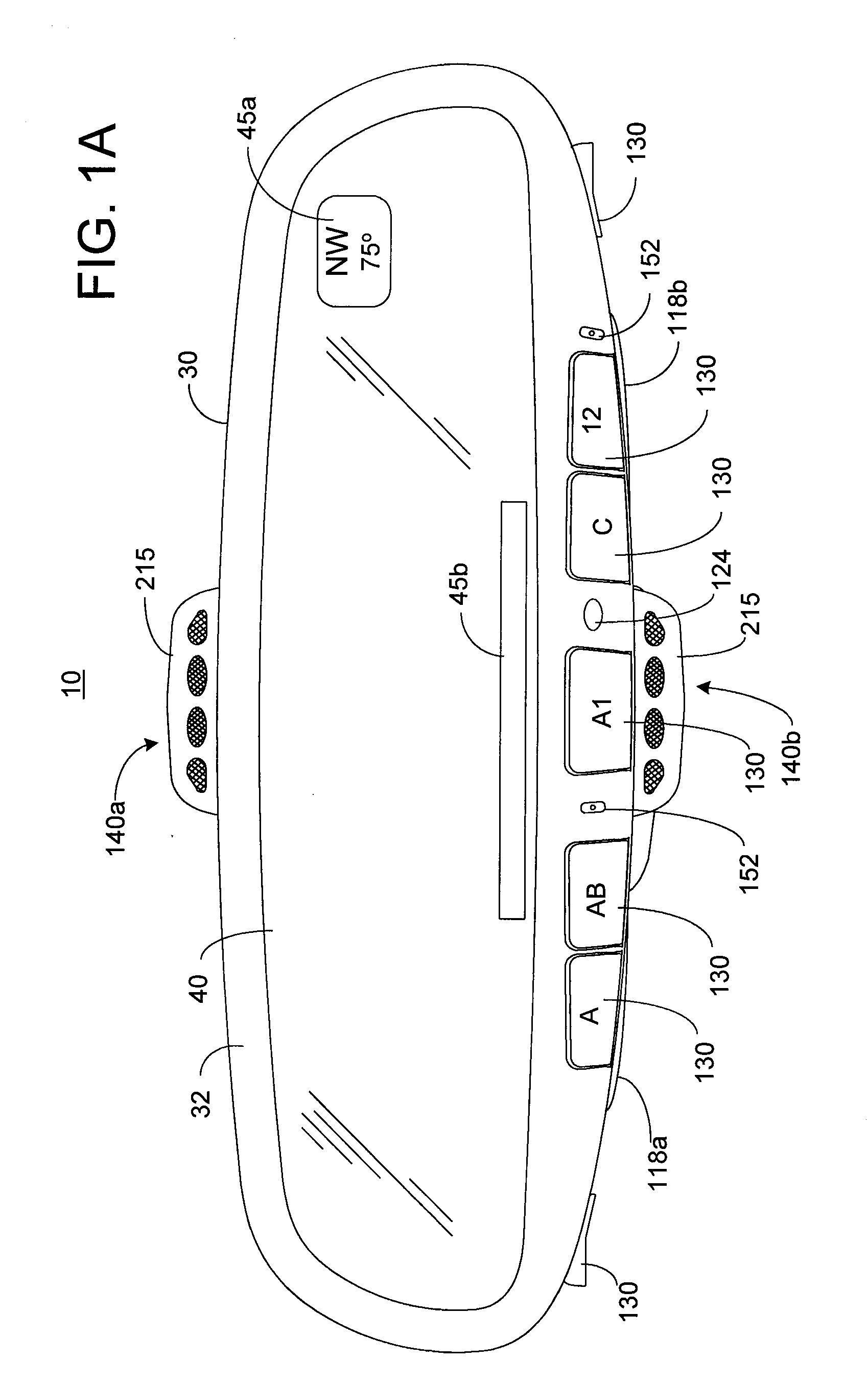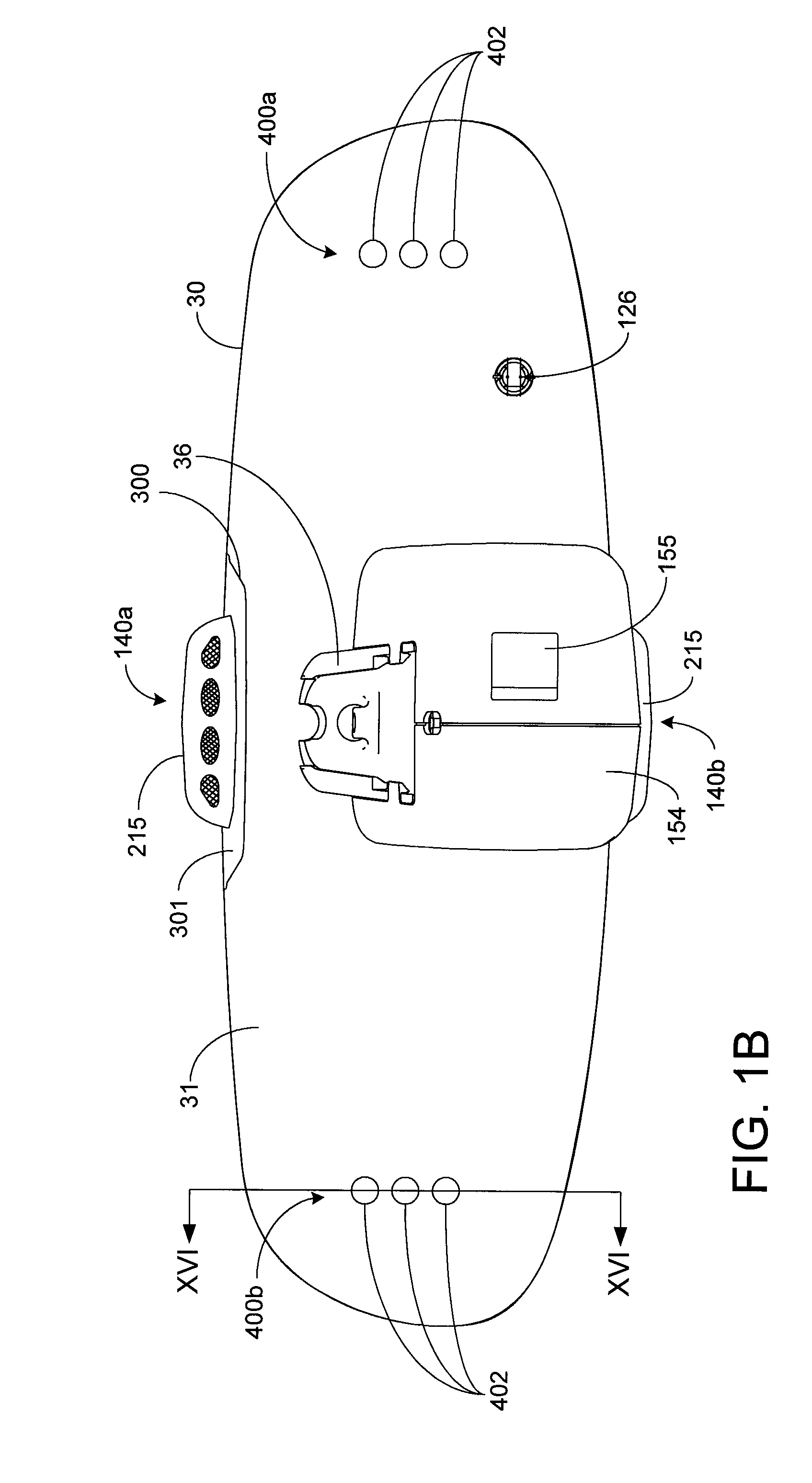Rearview assemblies incorporating hands-free telephone components
a technology of hand-free telephone components and rearview mirrors, applied in the field of rearview mirrors, can solve the problems of not becoming very popular, hand-held portable cellular telephones, and vehicle audio systems without audio input jacks, and achieve the effect of preventing the exchange of certain data
- Summary
- Abstract
- Description
- Claims
- Application Information
AI Technical Summary
Benefits of technology
Problems solved by technology
Method used
Image
Examples
fifth embodiment
[0147]FIG. 15 shows a rearview mirror assembly 10d constructed in accordance with the present invention. This embodiment differs in that it includes four microphone subassemblies, including subassemblies 140a and 140c mounted to the top of mirror housing 30 and subassemblies 140b and 140d mounted to the bottom of mirror housing 30. Such an arrangement is particularly advantageous in that it not only takes advantage of the aforementioned advantages pertaining to a vertical array of microphone transducers, but also achieves all the advantages of a horizontal array to thereby allow for more of a three-dimensional audio imaging capability. Such a capability allows the connected DSP to more readily identify desired speech based upon the position of the source of such sounds and to more readily identify and remove noise.
Internal Speakers
[0148] As mentioned above, providing speakers in a rearview mirror presents several challenges. The speakers have to be very small and yet create an out...
first embodiment
[0151] As shown in FIGS. 1A-3, in accordance with a first embodiment, two speakers 400a and 400b are mounted in the interior of the mirror housing 30 near opposite ends thereof with front ports 402 provided in mirror housing 30 to allow sound generated by the speakers to exit the mirror housing. As will be explained further below, the size and shape of ports 402 are not arbitrarily chosen, but rather are designed to cooperate with the size and shape of a front acoustic chamber 406 (FIGS. 16A and 16B) to provide a resonant frequency in the ranges noted above and thereby boost the frequency response at the most useful frequencies. Preferably, grille cloth is sealed across the opening of ports 402 and is treated with a hydrophobic material to repel water and thereby reduce the likelihood that water could penetrate through to the speakers. Preferably, the color of the grille cloth is color-matched to the color of the mirror housing as is the windscreen of the microphone subassemblies.
[0...
PUM
 Login to View More
Login to View More Abstract
Description
Claims
Application Information
 Login to View More
Login to View More - R&D
- Intellectual Property
- Life Sciences
- Materials
- Tech Scout
- Unparalleled Data Quality
- Higher Quality Content
- 60% Fewer Hallucinations
Browse by: Latest US Patents, China's latest patents, Technical Efficacy Thesaurus, Application Domain, Technology Topic, Popular Technical Reports.
© 2025 PatSnap. All rights reserved.Legal|Privacy policy|Modern Slavery Act Transparency Statement|Sitemap|About US| Contact US: help@patsnap.com



